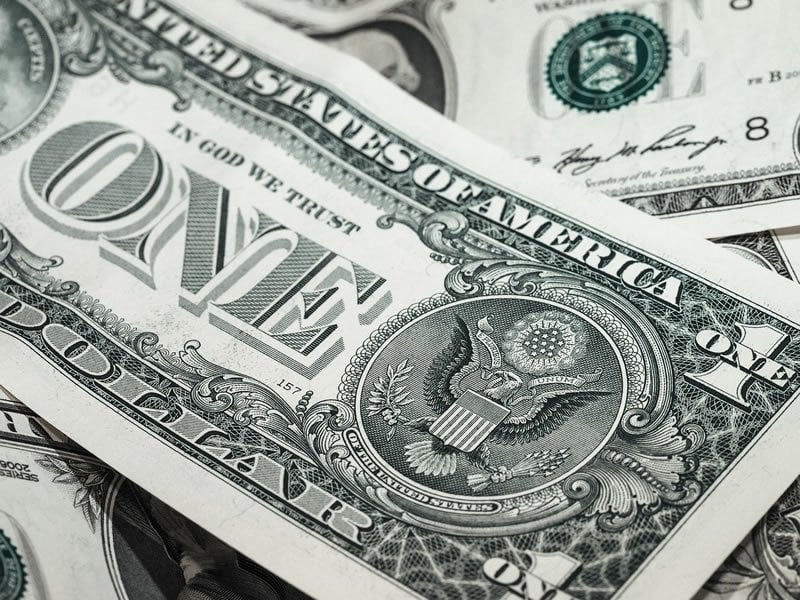Summary: A $1 raise in minimum wage was associated with a drop in suicide rates of between 3.5 to 6% in people with a high school education or less. The effect, researchers say, appears to be strongest during times of high unemployment.
Source: BMJ
A US$1 increase in the minimum wage is linked to a fall in the suicide rate of between 3.5 and 6% among people with high school education or less, reveals a 26-year study, published online in the Journal of Epidemiology & Community Health.
The effect seems to be strongest during periods of high unemployment, the findings indicate.
In 2017, there were more than 47,000 preventable suicide deaths in the USA, with suicides accounting for nearly one in five (19%) deaths among those aged 18-24. Between 1999 and 2017, suicide rates increased by more than 30% in half of US states.
Suicide risk is often associated with financial stressors, but less is known about the potential impact of economic interventions, such as minimum wage policies, on suicide rates.
To try and find out, the researchers looked at the difference between the effective state and federal minimum hourly wage for all 50 states and Washington DC and state unemployment and suicide rates among 18 to 64-year olds, for every month between 1990 and 2015.
Between 1990 and 2015, there were 478 changes in state minimum wages across US states. The average difference in wages between the states at and above the federal minimum wage was US$ 2200/year for a full time worker.
In 1990, 36 states had a minimum wage equal to the federal rate; by 2015, this had fallen to 21 states.
Between 1990 and 2015, 399,206 people with high school education or less took their own lives compared with 140,176 people with a college degree or higher.
The researchers estimated a 3.5-6% reduction in suicides for every dollar increase in the minimum wage among 18-64 year olds with high school education or less. No such effect was apparent among those who were educated to college level or higher.
The association between minimum wage and suicide rates differed by state-level unemployment rate during the 26-year timeframe.
When this was high (above 6.5%), progressively higher minimum wages were associated with lower suicide rates; when unemployment was low, on the other hand, the association with the minimum wage weakened.
Based on these estimates, the researchers calculated that after the 2009 peak in unemployment following the financial crash, 13,800 suicides could have been prevented between 2009 and 2015 among less well educated 18-64 year-olds if a US$1 dollar increase had been added to the minimum wage. A US$2 increase could have prevented 25,900 suicides, they calculated.

Over the entire 26-year period, the researchers estimated that a US$1 increase in state minimum wage could have staved off 27,550 suicides in this group of workers, while a US$2 increase could have staved off 57,350 suicides.
This is an observational study, and as such, can’t establish cause. But, conclude the researchers: “Our findings are consistent with the notion that policies designed to improve the livelihoods of individuals with less education, who are more likely to work at lower wages and at higher risk for adverse mental health outcomes, can reduce the suicide risk in this group.”
They add: “Our findings also suggest that the potential protective effects of a higher minimum wage are more important during times of high unemployment.”
Source:
BMJ
Media Contacts:
BMJ Media Relations – BMJ
Image Source:
The image is in the public domain.
Original Research: Open access
“Effects of increased minimum wages by unemployment rate on suicide in the USA”. John A Kaufman, Leslie K Salas-Hernández, Kelli A Komro, Melvin D Livingston.
Journal of Epidemiology & Community Health doi:10.1136/jech-2019-212981.
Abstract
Effects of increased minimum wages by unemployment rate on suicide in the USA
Background
Social welfare policies such as the minimum wage can affect population health, though the impact may differ by the level of unemployment experienced by society at a given time.
Methods
We ran difference-in-differences models using monthly data from all 50 states and Washington, DC from 1990 to 2015. We used educational attainment to define treatment and control groups. The exposure was the difference between state and federal minimum wage in US$2015, defined both by the date the state law became effective and lagged by 1 year. Models included state and year fixed effects, and additional state-level covariates to account for state-specific time-varying confounding. We assessed effect modification by the state-level unemployment rate, and estimated predicted suicide counts under different minimum wage scenarios.
Results
The effect of a US$1 increase in the minimum wage ranged from a 3.4% decrease (95% CI 0.4 to 6.4) to a 5.9% decrease (95% CI 1.4 to 10.2) in the suicide rate among adults aged 18–64 years with a high school education or less. We detected significant effect modification by unemployment rate, with the largest effects of minimum wage on reducing suicides observed at higher unemployment levels.
Conclusion
Minimum wage increases appear to reduce the suicide rate among those with a high school education or less, and may reduce disparities between socioeconomic groups. Effects appear greatest during periods of high unemployment.






